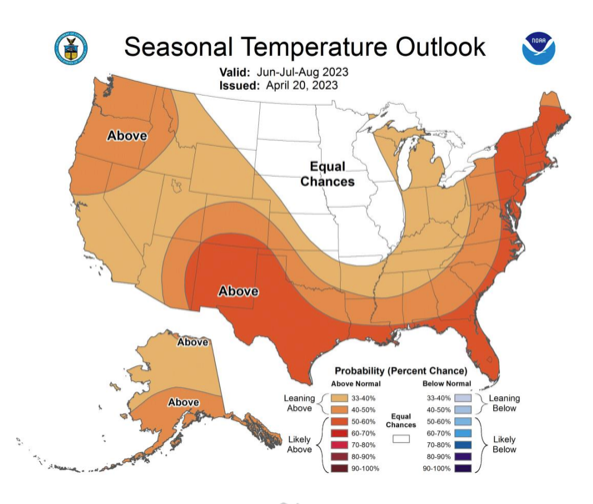Once commonly referred to as the “greatest machine in the world,” the US energy grid now struggles to provide an adequate and reliable electricity supply on a regular basis, its reliability decreases even more so when temperatures rise.
According to the North American Electric Reliability Corporation (NERC) 2023 Summer Reliability Assessment Report, the majority of North America will be at an elevated risk for electricity supply shortages during periods of extreme summer heat. Sadly, brownouts and blackouts are now practically expected throughout the summer months — particularly during heatwaves — costing billions of dollars in damages and posing significant harm to communities and businesses.
 The Cumulative Impact of Air Conditioning
The Cumulative Impact of Air Conditioning
For most Americans, beating the heat means simply altering their climate control. A relatively straightforward process, I, like many consumers, merely adjust my thermostat and a few moments later, I feel the reprieve of cool air.
But as heatwaves have grown more common and powerful, air conditioning (AC) has become a major source of stress for the American power supply. Cooling processes are energy intensive and when everyone turns on their AC all at once, the grid can quickly become overloaded. While addressing these peaks has always been a fundamental part of grid management, it’s become even more challenging in recent years with the integration of intermittent renewable energy sources.
The other problem with AC is that as temperatures rise higher, cooling becomes less energy efficient. While one gigawatt of electricity may be enough to supply 1,000 homes with AC under regular conditions, during a heatwave — when electricity demand is at full steam — that same amount of power might only be enough for 200 homes, resulting in a frenzied electricity demand causing sporadic outages.
 Transmission and Distribution Challenges
Transmission and Distribution Challenges
Elevated temperatures don’t just threaten to overwhelm the grid from excessive demand — they also interfere with electricity production, both from renewable and non-renewable sources. Intense temperatures, for instance, cause the efficiency of wind turbines to drop alongside ambient air density. Simultaneously, extreme heat causes overactivity of electrons in solar panel circuits, reducing their voltage and overall production output.
Thermoelectric power plants, including coal, oil, gas, and nuclear, also suffer under intense heat. High temperatures reduce the availability of cooling water, forcing production cutbacks to prevent over warming and long-term capital damage.
 Constrained Grid Supply
Constrained Grid Supply
The impact of extreme heat on transmission and distribution infrastructure further compounds the severity of the situation. High temperatures diminish the amount of electrical capacity that can be safely carried along transmission lines, which lowers the overall rating of the line, further cutting back on the available supply of electricity to end users. Additionally, as transmission lines warm up, their interior conductor metals expand, resulting in drooping. This can expose the lines to greater hazards, often leading to downed infrastructure.
The failure rates of electrical transformers also skyrocket under extreme temperatures. These incidents can be particularly devastating for our communities, as they can result in fires and downed power lines, further interfering with the grid supply.
Where Natural Gas Microgrids Fit in
Clearly, the centralized grid is not up for the challenge of extreme heat — yet. Fortunately, there are solutions. One such solution, natural gas microgrids, offer 24/7 reliability even under the highest temperatures. They operate independently, are connected on-site, and face no intermittency challenges, setting them apart from other grid solutions. Immediately dispatching power the second an outage occurs without relying on transmission infrastructure, microgrids offer unmatched resiliency to ensure peace of mind and business continuity regardless of what the thermostat reads.
When the weather is cooperating and the grid is functioning without constraint, Enchanted Rock microgrids serve another purpose. Our microgrids can be used as an ancillary grid service to help meet peak demand and generate additional revenue. In this way, microgrids not only protect facilities and businesses from costly and disruptive grid outages, but also help prevent these outages from happening in the first place. This duality highlights the benefits of thinking beyond typical grid configurations and shows the revenue potential of offering externality avoidance as a service.
The grid may no longer be capable of reliably withstanding the soaring summer temperatures, but that doesn’t mean businesses have to resign themselves to regular power outages. In fact, doing so would be a massive risk. Instead, they should embrace resiliency solutions like microgrids to not only ensure nonstop reliability but also differentiate themselves from their competitors. NERC recommends, “State regulators and industry should have protocols in place for managing emergent requests for environmental waivers to preserve generation needed for high demand.” Together, we can keep the lights on and the cool air flowing.




















